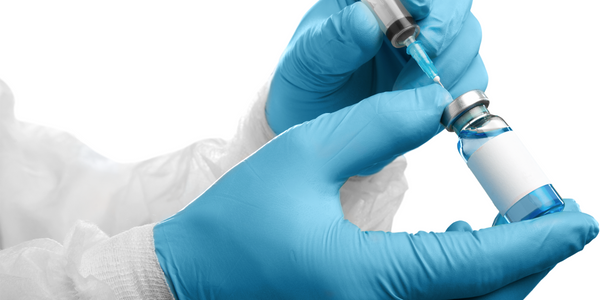公司规模
Large Corporate
地区
- Europe
国家
- United Kingdom
产品
- Actian Ingres database
技术栈
- Linux
实施规模
- Enterprise-wide Deployment
影响指标
- Productivity Improvements
- Cost Savings
技术
- 应用基础设施与中间件 - 数据库管理和存储
适用行业
- 药品
适用功能
- 物流运输
- 销售与市场营销
用例
- 供应链可见性(SCV)
- 库存管理
服务
- 系统集成
关于客户
AAH Pharmaceuticals Ltd. is the United Kingdom’s leading distributor of pharmaceutical and healthcare products and services to pharmacies, hospitals, and doctors. The company has more than 4,000 employees and operates 19 distribution warehouses in the United Kingdom and Northern Ireland. AAH delivers more than 2.6 million products daily, relying on an enterprise-class IT infrastructure to support its large-scale logistical operations. The company operates in a highly regulated and constantly changing market, requiring agility to respond quickly and efficiently to emerging business requirements. As an intermediary between suppliers and end customers, AAH faces additional complexity; each business application used and each link in the value chain must perform optimally to maintain competitive advantage.
挑战
AAH Pharmaceuticals Ltd. is the United Kingdom’s leading distributor of pharmaceutical and healthcare products and services to pharmacies, hospitals, and doctors. With more than 4,000 employees, 19 distribution warehouses in the United Kingdom and Northern Ireland, and more than 2.6 million products delivered daily, the company relies on an enterprise-class IT infrastructure to support its large-scale logistical operations. At the same time, in its highly regulated and constantly-changing market, AAH must also maintain the agility to respond quickly and efficiently to emerging business requirements. The company’s role as an intermediary between suppliers and end customers brings additional complexity to the challenge; each business application used and each link in the value chain must perform optimally to maintain competitive advantage.
解决方案
To provide the agility and performance its business required, AAH migrated its systems onto Ingres running on Linux. The results were nothing short of spectacular: “It practically installs itself in a matter of minutes,” says Richard David, senior database administrator for AAH, who highlighted the speed of the system’s performance. “This is by far the best Ingres product I’ve seen in many years.” The company now uses Ingres technology to run all of its most important business applications, including stock, sales, invoicing, and master data maintenance. Based on open source technology, Ingres has enabled seamless integration with the legacy systems of AAH’s constituent companies, Enterprise (the leading wholesaler of health and beauty products in the United Kingdom) and Trident (a shortline distributor of generics and parallel imports). As a result, the company can provide its partners with flexible support services that can adapt to constantly changing market trends.
运营影响
数量效益

Case Study missing?
Start adding your own!
Register with your work email and create a new case study profile for your business.
相关案例.

Case Study
Case Study: Pfizer
Pfizer’s high-performance computing software and systems for worldwide research and development support large-scale data analysis, research projects, clinical analytics, and modeling. Pfizer’s computing services are used across the spectrum of research and development efforts, from the deep biological understanding of disease to the design of safe, efficacious therapeutic agents.

Case Study
Fusion Middleware Integration on Cloud for Pharma Major
Customer wanted a real-time, seamless, cloud based integration between the existing on premise and cloud based application using SOA technology on Oracle Fusion Middleware Platform, a Contingent Worker Solution to collect, track, manage and report information for on-boarding, maintenance and off-boarding of contingent workers using a streamlined and Integrated business process, and streamlining of integration to the back-end systems and multiple SaaS applications.

Case Study
Process Control System Support
In many automated production facilities, changes are made to SIMATIC PCS 7 projects on a daily basis, with individual processes often optimised by multiple workers due to shift changes. Documentation is key here, as this keeps workers informed about why a change was made. Furthermore, SIMATIC PCS 7 installations are generally used in locations where documentation is required for audits and certification. The ability to track changes between two software projects is not only an invaluable aid during shift changes, but also when searching for errors or optimising a PCS 7 installation. Every change made to the system is labour-intensive and time-consuming. Moreover, there is also the risk that errors may occur. If a change is saved in the project, then the old version is lost unless a backup copy was created in advance. If no backup was created, it will no longer be possible to return to the previous state if and when programming errors occur. Each backup denotes a version used by the SIMATIC PCS 7 system to operate an installation. To correctly interpret a version, information is required on WHO changed WHAT, WHERE, WHEN and WHY: - Who created the version/who is responsible for the version? - Who released the version? - What was changed in the version i.e. in which block or module of the SIMATIC PCS 7 installation were the changes made? - When was the version created? Is this the latest version or is there a more recent version? - Why were the changes made to the version? If they are part of a regular maintenance cycle, then is the aim to fix an error or to improve production processes? - Is this particular version also the version currently being used in production? The fact that SIMATIC PCS 7 projects use extremely large quantities of data complicates the situation even further, and it can take a long time to load and save information as a result. Without a sustainable strategy for operating a SIMATIC PCS 7 installation, searching for the right software version can become extremely time-consuming and the installation may run inefficiently as a result.

Case Study
ELI LILLY ADOPTS MICROMEDIA’S ALERT NOTIFICATION SYSTEM
Pharmaceutical production is subject to a strict set of enforced rules that must be adhered to and compliance to these standards is critically necessary. Due to the efforts of WIN 911’s strategic partner Micromedia, Lilly was able to adopt an alarm notification infrastructure that integrated smoothly with their existing workflows and emergency hardware and protocols. These raw energy sources enable the industrial process to function: electricity, WIN-911 Software | 4020 South Industrial Drive, Suite 120 | Austin, TX 78744 USA industrial steam, iced water, air mixtures of varying quality. Refrigeration towers, boilers and wastewater are monitored by ALERT. Eli Lilly identified 15000 potential variables, but limitations compelled them to chisel the variable list down to 300. This allowed all major alarms to be covered including pressure, discharge, quantity of waste water discharged,temperature, carbon dioxide content, oxygen & sulphur content, and the water’s pH.









